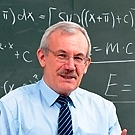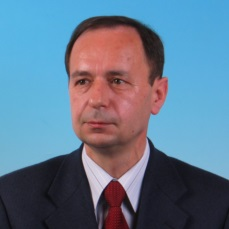Materials for Luminescent Detectors and Transformers of Ionizing Radiation (Second Volume)
A special issue of Materials (ISSN 1996-1944). This special issue belongs to the section "Optical and Photonic Materials".
Deadline for manuscript submissions: 31 August 2024 | Viewed by 1540
Special Issue Editors
Interests: scintillators; development of luminescent materials in the single crystalline and crystals forms; energy transfer proceses in scintillators; defects and dopant as emission and trapping centers in dielectrics
Special Issues, Collections and Topics in MDPI journals
Interests: CVD diamond; thin nano- and microcrystalline films; diamond single crystals; optical spectroscopy
Special Issues, Collections and Topics in MDPI journals
Special Issue Information
Dear Colleagues,
We are pleased to invite you to publish your latest results in this Special Issue of Materials, "Materials for Luminescent Detectors and Transformers of Ionizing Radiation".
Significant achievements have been made in recent years in the synthesis of new luminescent compounds in different crystalline forms. As a result, engineers and designers have easy access to these materials to create ionizing radiation detectors for use in different branches of industry and science. These new materials offer solutions that can improve the performance of respective devices and enable completely new approaches to challenging problems, especially in medical diagnostics.
This Special Issue of Materials will be a forum for the presentation of the latest developments in basic and applied research in the fields of radioluminescence, the processes of energy transfer and storage in solids, the physics and chemistry of luminescent phosphor and scintillation materials, and their related applications.
Prof. Dr. Yuriy Zorenko
Prof. Dr. Kazimierz Fabisiak
Guest Editors
Manuscript Submission Information
Manuscripts should be submitted online at www.mdpi.com by registering and logging in to this website. Once you are registered, click here to go to the submission form. Manuscripts can be submitted until the deadline. All submissions that pass pre-check are peer-reviewed. Accepted papers will be published continuously in the journal (as soon as accepted) and will be listed together on the special issue website. Research articles, review articles as well as short communications are invited. For planned papers, a title and short abstract (about 100 words) can be sent to the Editorial Office for announcement on this website.
Submitted manuscripts should not have been published previously, nor be under consideration for publication elsewhere (except conference proceedings papers). All manuscripts are thoroughly refereed through a single-blind peer-review process. A guide for authors and other relevant information for submission of manuscripts is available on the Instructions for Authors page. Materials is an international peer-reviewed open access semimonthly journal published by MDPI.
Please visit the Instructions for Authors page before submitting a manuscript. The Article Processing Charge (APC) for publication in this open access journal is 2600 CHF (Swiss Francs). Submitted papers should be well formatted and use good English. Authors may use MDPI's English editing service prior to publication or during author revisions.
Keywords
- luminescent materials
- radiation detectors and transformers of ionizing radiation
- crystals
- film
- nanophosphors and nanocomposites







